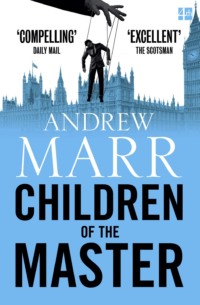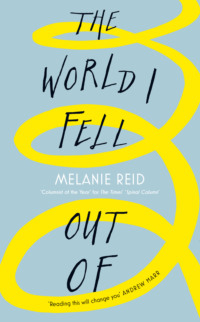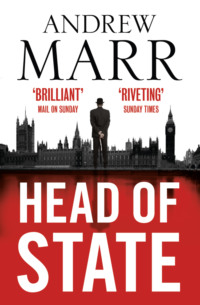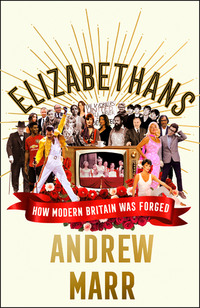
Полная версия
Tommy’s War: A First World War Diary 1913–1918

TOMMY’S WAR
A FIRST WORLD WAR DIARY
1913–18
Thomas Cairns Livingstone
Edited by Ronnie Scott
Foreword by Andrew Marr

Dedication
In memory of
Thomas, Agnes and Wee Tommy.
Contents
COVER
TITLE PAGE
DEDICATION
ABOUT THE DIARIES
FOREWORD BY ANDREW MARR
PEOPLE AND PLACES
1913
1914
1915
1916
1917
1918
1933 AND 1950
PICTURE CREDITS
COPYRIGHT
ABOUT THE PUBLISHER
About the Diaries
Thomas Cairns Livingstone began writing his diary shortly before ‘flitting’ from 20 to 14 Morgan Street, Govanhill, Glasgow in 1913. Just why he started his diary has been lost to the annals of time, but a clue surely lies in his grandfather’s and father’s need to record their daily lives and their love of writing. Thomas’ grandfather was a teacher of English in Lurgan, Northern Ireland, his father, Joseph, kept an exquisite hand-illustrated journal of events deemed important to the Livingstone family. Perhaps Thomas was simply keeping up a family tradition he enjoyed, as well as marking the time that he first moved into his own home with his new family.
He had married Agnes Smart Cook (thinking that marrying A. Smart Cook he would never starve …) three years before moving to Morgan Street. The first few years of the diaries record – at the foot of each page – events of each day ten years earlier, when they were courting. Their son, Thomas Cairns Livingstone junior – invariably known as ‘Wee Tommy’ – joined the family in 1911 and was a toddler at the time of the move and the diaries’ commencement.
The diaries reveal how very well suited Thomas was to his job as a mercantile clerk. He had a pressing need to record all sorts of detail even, in many entries, the precise hour that he awoke and went to bed, with the discipline to maintain this long after most would have given up. Thomas never missed his daily entry for over twenty years, loyally filling each dated page of his clothbound diaries with his signature dry, humorous notes, observations and wonderful drawings, summarising the day’s events at home and further afield. Often a drawing is more telling than the words themselves, and he clearly meant one to be read against the other. From the accounts of other relatives, they were seen as something of a family treasure, and a list of each family visit is included in most volumes. In later years, Thomas enjoyed showing them off to his nephews and nieces.
After 1918 the diaries continue in their fine characteristic vein over the course of a further decade and a half, providing a very special snapshot of the post-war world and the unfolding Livingstone family pocket saga. Thomas ended his epic in 1933 as Wee Tommy started his working life at Glasgow University and old age caught up with Thomas senior. A very poignant last entry, dated 1950, records the death of his beloved wife, Agnes.
Upon Thomas’ death in 1964 the diaries passed to a less-than ‘wee’ Tommy, who remained his only child. He kept them until his own death in 1995, by which time he was living in Northumberland. The diaries were entered into a local county auction house in 2005 which, as a local antiques dealer, I happened to attend. There was something compelling about these twenty-odd little volumes nestled together in a shoebox, and I was able to secure them for the princely sum of £300.00.
That very weekend Thomas and his diaries quickly began to become part of my life. I read them cover to cover – including Joseph’s own volume of family records – utterly absorbed by the lost life stories spilling out from their pages of hand-written words and pictures. Some pages even had stamps from Thomas’ collection stuck on to them. It was like opening a time capsule. Every facet of life seemed to be recorded there, from glorious summers, heart-rending sadness of losing loved ones, frustrations with work, to his enduring love for Agnes. What seemed particularly special was being able to witness daily life and Wee Tommy growing up against the backdrop of the Great War, together with a chronicle of all the events in Glasgow and the rest of the Empire. As the war progressed, the bottom portion of every page – after tales of jam-making, walks in the park and seemingly constant redecorating of the front room (presumably because of the sooty fire) and blacking of the grate – sombrely lists the loss of life that each day’s newspaper had announced, together with any notable gains or military achievements.
Soon I found myself on the road in a quest to explore the life and discover more about this remarkable man from Glasgow and his family. I’m extremely grateful to Dr. Irene O’Brien and the wonderful staff at the Mitchell Library in Glasgow, and all the Livingstone relatives, Helen Carlyle, Ella Brown and Colin Brown, who have helped me in my quest, and with whom I’ve been delighted to share the details I’ve found about their ‘lost’ relative.
If you know more about Thomas than I have been able to uncover already, then I look forward to hearing from you – you’ll find the contact details at the back of this book.
When the BBC’s Antiques Roadshow rolled in to Alnwick Castle in July 2007, I couldn’t resist taking the diaries along. I found myself pulled out of a queue and ended up being filmed with books expert Clive Farahar. The episode was broadcast that autumn and caused a lot of interest from publishers and literary agents keen to bring the diaries to the nation’s attention. It was thrilling that in the end they were taken on by HarperCollins, themselves of Glasgow descent, and in whose blank diary pages Thomas Cairns Livingstone left his enduring mark.
At last, some of the best of the private diaries of Thomas Cairns Livingstone are ready to be enjoyed and treasured by everyone. A lot of people have worked on bringing this to fruition, but I’d like especially to thank my partner Joan for her patience and support; Gordon Wise of Curtis Brown for offering to take on their representation; Michael Morrison, whose mother was ‘wee’ Tommy’s great friend and heir; John Bond and Arabella Pike and all the team at HarperPress for all the hard work in assembling this edited volume of the years 1913-1918 and sourcing such suitable photographs to complement Thomas’ illustrations and stories; Dan Cruickshank, for his early enthusiasm; and Ronnie Scott, for bringing those stories to life for the uninitiated, picking out storylines and providing background notes to enable us to understand Thomas Cairns Livingstone’s world more than a little better.
Shaun SewellNorthumberland, June 2008
Foreword
A small man in a badly made suit, a hat jammed on his head and an empty pipe between his lips, is walking down the street towards the tram, with a small boy attached to one hand, in turn clutching a mouth organ. Around him are men in uniform, loud gossipy women on the corner, the rattle of horse-drawn carts, the smells of sulphur, oil, coal and sweat. On the walls as he passes, lurid recruiting posters urge him to join the lads in France, to fight to save his women from the Hun, or simply exclaim that his country needs him. Head down, fingering his last stiff collar, he disappears into the crowd gathering by the tram stop. The streets are shabby and the war news is terrible. There is a faint sound of the mouth organ being played. Who is he, this man? What does he do? Does he have a wife at home, her hands coarsened with heavy washing and scouring, but her bread smelling sweet? Will he soon be wearing a khaki uniform, and die choking in French mud thinking of the small boy; or will he survive this so-called Great War? Does he like cards? What does he think of Germans, and this throbbing, clattering city where he has spent his life? But he has gone, vanished into time like the millions upon millions who lived through momentous times but who were not Lloyd George, or Haig, or even Harry Lauder.
Well, by extraordinary luck and chance, he has not gone. Back from the dead, Thomas Cairns Livingstone of Rutherglen, a clerk, married to Agnes, who was often ill, and the proud father of Wee Tommy, is returned to life through handwritten diaries and drawings discovered in an auction in Northumberland in 2005 and bought for £300. So now we know what he thought, who he was and what happened to him later. It is a story extraordinary in its ordinariness; it is good to have him back. For in general, history is owned by those who record it. Only a handful of truly powerful people were recorded by others at the time. Mostly, historians have depended on autobiographies, property records, diaries, letters, newspapers and account books. So ‘history’ has too often been that of those at the top of the pile, the politicians, writers and professional leaders; and it has been a hard task to disinter the lives of millions who left no written trace. It was not until 1937 that ‘Mass Observation’ began to accumulate the diaries and thoughts of ordinary Britons. Before that, the voices of the majority had been heard through snippets in newspapers, court reports or in rare sociological exercises, like Charles Booth’s studies of the London poor. There were a few memoirs by people further down the tree, clerks and governesses; some of the working-class Suffragettes and trade unionists left written records, for instance. There was the knowledgeable mimicking of working-class and lower-middle-class life by novelists – the clerks and shopkeepers of H. G. Wells, or the miners of D. H. Lawrence. But the material was always scanty.
During the First World War there was much recording of the lives and heroism of the men at the front, who wrote letters back home. Some retold their stories much later to historians. Little by comparison was written about the home front, where, of course, the vast majority of British people were living their lives. Oral historians like Richard van Emden and Steve Humphries have done much to salvage material from those they could find who were still alive; numerous local historical societies have done the same. But the diary of Thomas Livingstone is a rare thing. Here is the Great War as it was seen by an ordinary man, no hero, living in the backstreets of Glasgow. You might call him a Scottish Pooter, except that his drawings and humour are more self-knowing. He was no special rebel, indeed no special anything. But that is the point. As with family history, the stories of plain people upend and challenge the stories told by historians. For instance, I had no idea just how near the trenches seemed until learning that my family, also from Glasgow, got laundry back from sons in the trenches every week, and sent the clean underclothes back, along with cakes, chocolate and tobacco. The fast train service made Flanders seem very close. Thomas’ story is family history, except that his immediate family has long gone and it has been returned as a family story for all of us.
These were momentous times, and Glasgow in 1913—18 was a city at the edge of turmoil, seen by some as the next Bolshevik Petrograd. Yet as Auden famously pointed out while contemplating a painting of the fall of Icarus, great events take place in the middle of ordinary ones, ‘while someone else is eating or opening a window or just walking dully along’. Tommy’s War is a war in a world of dull work, shortages, crying children and everyday diseases. He is not much concerned with high politics, though he has a shrewd and cynical take on government and its wartime propaganda: ‘This is SOS Week in Glasgow. Save our souls. Sink or swim. Stew or sausages. Steal or starve. Save or starve. Sew our shirts. Have your choice …’ He has a rebellious streak, but his rebellion is more directed at the hated factor, or rent-collector, than the government itself. In that, as in so much, he was pretty typical. The revolt which is remembered as ‘Red Clydeside’ was a series of disputes, starting with one over rent controls. The vast majority of Glaswegians rented their homes and when 20,000 munitions workers arrived in the city, the shortage of rooms was quickly exploited by the private landlords. Rents went up by more than a fifth. Factors were attacked by women, pelted in the street and went in fear. People refused to move or pay up. Placards reading ‘Rent Strike’ and ‘We are Fighting Landlord Huns’ went up in the windows and when, by May 1915, around 25,000 tenants were refusing to pay, ministers started to panic. Thomas, surely, would have sympathised but at the time he was much more interested in a huge rail crash at Gretna, which killed around 227 people but which has been largely forgotten by history. And this, too, is part of the appeal. The ‘story’ of those times that has been smoothed into predictability by historians is constantly disrupted by small surprises.
Thomas had no desire to be a soldier. In that, too, he was typical. After the great torrents of excited volunteers in the early days of the war, when patriotic enthusiasm had been dampened by stories of the reality of trench warfare, millions of men tried very hard not to serve their country, at least not in France or in khaki. We remember the ‘white feather’ campaigns and the famous Kitchener recruitment posters, and indeed huge citizen armies were created. But the feathers and the posters were needed because of widespread reluctance, particularly as a sense of the length and grimness of the fighting settled in people’s minds. As the war advanced, reflected in newspaper stories about victories and defeats, the pressure piled on. Like Thomas, it became impossible to be both patriotic and a quiet civilian. He is darkly humorous about his dilemma. When the Derby scheme was announced, offering men the chance of volunteering in return for a delay in being actually called up, he reports, ‘Got a love letter from Lord Derby egging me on to enlist before they make me.’ And later: ‘Recruiting sergeant up at night to assist me in making up my mind. I did not go away with him.’ Finally, on a snowy December night in 1915, he gives way: ‘Could resist no longer. Joined the army today … God save the King.’ In fact, Thomas never did have to become a soldier. For him the war is always just off-stage, as in a classical tragedy, a succession of liners and battleships being sunk, poison gas used, terrible losses reported, revolutions erupting and aircraft raiding. We must remember, this is how most people would have experienced it. And most, too, would have been more immediately concerned, as Thomas was, with the small things of life – rain, wind, coughs, shortages, chores, food and family.
As with Pepys or Boswell (admittedly, greater diarists) we enjoy the constant rub of the ordinary against the ‘historic’. Given that some historians have insisted the general public was fairly ignorant of the war it is interesting that Thomas, from his Glasgow flat, pretty accurately records each major event as it happens. Thus he is fully aware of the first day of the Battle of the Somme, even recording that it started ‘at 7.30 a.m. today’. But with 67,000 British casualties on the first day alone, a third of them killed, he quickly moves on, so that two days later, his main worry is that his young son Tommy is being teased by another boy: ‘Nice warm day. Tommy getting abused by the young microbe next door called Alec Gray. So I spoke severely to the aforesaid young microbe surnamed Gray. His ma then abuses Agnes.’ It is a moment to be compared with Pepys’ worries about the fate of a cheese during the Great Fire of London. Sometimes the juxtapositions are cheerily surreal: ‘The King doing Glasgow this week and round about. I saw him today. Agnes made plum jam at night.’ Or, from 16 March 1917: ‘Doctor up in the forenoon. Tommy has the German measles. Doctor says it is a mild case … Revolution in Russia. Czar dethroned. The Duma are in full power. The Czar and Czarina are prisoners.’ This, we all know, is how things are, the pattern of life. Great events occur. We note them. Meanwhile we have to cope with German measles, or a local lout.
Thomas is not given to rhetorical flourish or overstatement. He is a brisk, tart, dryish writer, who presents himself as put-upon and henpecked and whose drolleries are the more striking for their rarity. Yet he is, in his way, a good writer, too: he has a distinct voice and it is impossible to spend an hour with his diaries without having a clear impression of the man. No diarist who is disagreeable will keep our attention long: Thomas Livingstone is, we come to understand, a thoroughly likeable man whose love for his wife and son and growing horror at the scale of the slaughter shine through the laconic and self-mocking entries. What I find makes this book particularly touching are the illustrations, the quick pen-and-ink sketches, carefully coloured, of Thomas and the cast of characters, wife, son, recruiting sergeant, chimney-sweep, soldiers and the rest. They have a humorous immediacy and artlessness which is very winning, and go perfectly with the tone of the written diary. In the end, the best test of a book like this is whether one wants any more of it or not: I for one ended it in 1918 with a feeling of frustration. If the diaries continue to 1933, what happens next? Let us hope we find out, but meanwhile a little more about the city where Thomas lived, and the times he lived through, may be helpful.
Glasgow is special, was special and always will be. I should know. During the late nineteenth and early twentieth centuries, my family were solidly Glasgow. They were of a higher social class than Thomas, though they yo-yoed with the fortunes of the city itself. Various branches went from farm labourers to quarrymen to quarry owners during the great days of the Victorian expansion; the owners of floridly posh new houses – a window for every day of the year in one of them, apparently – and proud members of the middle-class clubs and societies. One was a Unionist Lord Provost, the last of his political line. Others became losers in the years of depression that followed the Great War, when a pie factory, for instance, lost its shipyard worker customers. But they all belonged to the tight, self-confident world of the Second City of the Empire, remembering its glory days when much of the world’s shipping tonnage had been built on the Clyde, and further back when the ‘tobacco lords’ who had established the wealth of the new trading city were laying out grand new squares and crescents. It was a city, like Chamberlain’s Birmingham or the ‘Cottonopolis’ of Manchester, with a very strong sense of itself and its history, utterly unconnected to the airs of the formal capital, London. My own father vividly remembers being shown by his father the sight of the Queen Mary lying half-built and silent in the yards when bad times had arrived; and the veteran soldiers, with waxed ‘Kitchener’ moustaches and empty sleeves or trouser legs pinned up, employed to brush clean the points for Glasgow’s famous trams.
His city, and that of his forebears, was based on technological experiment, audacity in business and a ready supply of cheap labour, coal, steel and water. In 1840, Glasgow was a textile town of some 250,000 people, a vast increase on the previous decades. But by 1900 she was more than three times as big, and surrounded by booming satellite towns. Iron smelting and steel-making combined with the deep estuary connected to the booming Atlantic and imperial trade routes made Glasgow a perfect industrial revolutionary capital. Steamships were built on the Clyde from mid-Victorian times but the rival yards produced competitive pressure which gave Glasgow a world lead in techniques such as screw propulsion, triple and quadruple expansion, high-pressure boilers, turbines and diesel engines. For a century, ‘Clyde-built’ was a global byword for reliability and skill – a memory which lingered on long enough for the engineer on the Starship Enterprise to be ‘Scotty’. This expertise in turn led to other engineering successes, from locomotives and machine tools to sewing machines, bicycles and cars: in the pre-1914 Glasgow of Thomas’ world, the Singer factories were world innovators and the Argyll Motor Works was turning out cars which seemed as likely to dominate world markets as anything made in America. Glasgow was an innovative, aggressive, roiling and cocky place, thick with smoke, noise, the smell of oil and the raucous boasts of chisel-faced city fathers in their stock exchange and their new, grandly built churches. Govanhill, his part of the city, around a mile south of the centre, was one of the poorer districts but far from slum-ridden. Its industry included important locomotive and iron works and its red sandstone apartments were by Edwardian standards relatively spacious as working-class housing. It boasted a fine new Carnegie Library and much admired public baths.
This is not surprising. Glasgow industry sustained a cultural and intellectual self-confidence that has been all but forgotten. Glasgow has always felt oddly American, in the heavy, steel-framed structures and the shape of its public buildings – and still does. The revival churches of ‘Greek’ Thomson are one thing, but the greatest glories of the city for anyone with a taste for the daring are the buildings of Charles Rennie Mackintosh, the nearest Britain has ever had to a Gaudí, and a man who made corners of Glasgow as exotic as Gaudí’s Barcelona. Glasgow University never achieved quite the Enlightenment status of Edinburgh but it was a close thing. Glasgow was ancient enough, dating back to a college founded in 1451, and the city had a formidable roll-call of philosophers, scientists, doctors and religious scholars. By the early twentieth century, bright Glasgow students would no more have thought of going south to Oxbridge for their learning than of sailing to Mars. Glasgow, with her Gilbert Scott spire rising high, was as exciting a university as any in the country. Then there were the great institutions, the Mitchell Library and the riotously Spanish Baroque Kelvingrove Art Gallery. The ‘Glasgow Boys’ were a school of painters unlike any group elsewhere; and they were followed by Colourists who brought the brightness of the French Fauves to the north, as no English painters of the time quite achieved. All this was going on around Thomas, a mile or two to the west, the cultural life of a city which allowed him, at least, to visit art galleries and carefully laid-out public gardens. Among the smoke and the dirt, there were bright things gleaming.
Glasgow had her own novelists, her own songs, her own orchestral and music-hall traditions, her own favoured holiday resorts, in the southern Highlands or ‘doon the watter’ on the banks of the Clyde estuary. She had her famous and excellent High School for the middle classes and distinctive political traditions. These included, sadly, a vicious sectarianism. For Glasgow was a migrants’ city. She had been little more than a large village before Atlantic trade, and then shipbuilding caused mushrooming growth; so almost every Glaswegian had come from somewhere else. Many, of course, had arrived from other parts of the Scottish lowlands, from labouring, merchant or professional families established earlier in Edinburgh, or the smaller burghs of the country. They would be overwhelmingly Presbyterian, either loyal members of the national Church of Scotland, or members of rival churches which had broken away during the great disruptions of the mid-nineteenth century. Their traditions of serious book-learning and disputation would feed many later politicians, including some of the Marxists for which Glasgow also became famous. Another great migration came from the Highlands, the ‘Teuchters’ much ridiculed by city humorists and on music-hall stages, though the mockery was intermingled with sentimental claims about Hielan’ hames and aboriginal ‘but-and-bens’ (small cottages) in songs by the likes of Harry Lauder. These Highlanders, Macleans, Camerons, MacDonalds and Campbells, were again mostly Protestant but included a sprinkling of Roman Catholics from those islands and small outcrops which had stayed with the old faith.








